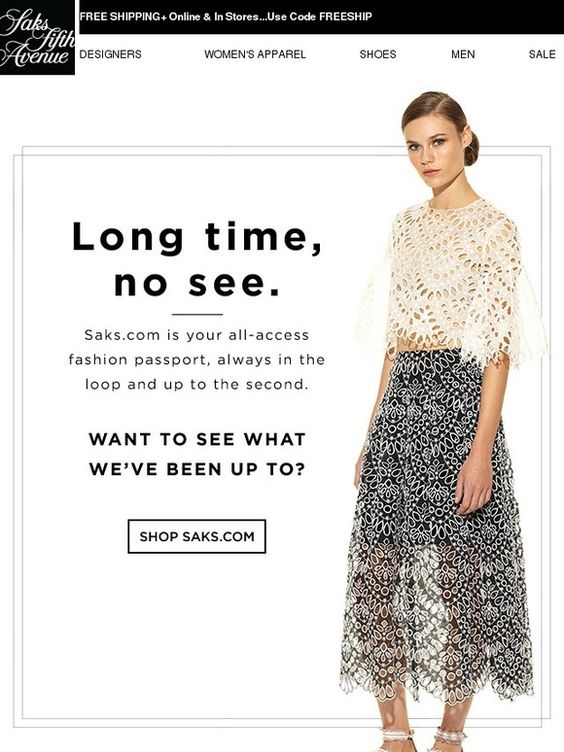Meet Melissa. She’s a regular marketer.
Like most marketers, Melissa struggles to keep her subscribers engaged. No one takes action from her emails.
Some don’t bother to open. Others do but don’t click.
Melissa scratches her head. How could this be possible when they signed-up? Why don’t they respond? She asks herself.
Having a list of unengaged subscribers – it’s a nerve-wracking experience if email marketing is one of your business-boosting strategies. To bring them back is like rekindling a broken friendship. Or saving a failing marriage.
Sometimes, solutions that you assume work are the ones that further drive people away. You might also decide that the matter is too difficult to handle that you choose to let go.
Can Melissa do something to fix her problem? Of course.
She can, without starting a list building campaign all over again. Because finding new prospects takes more time and resources than keeping the ones you have.
Find yourself in this situation? I got good news for you… People on your list are willing to engage with you again. You just need to tap into new and creative strategies.
Below, I share 10 ways with you.
1. Identify possible reasons for the disengagement.
The first step to addressing a problem is to know why it existed. Once you understand, you can move forward and avoid repeating the same mistakes. Take a step back and look at all probable causes.
Consider these reasons:
- People no longer need your help.
- You send emails too often.
- Change in email addresses.
- Wrong timing.
- You always try to sell them something.
- They hear the same things over and over again.
- They had a different expectation.
- Your content is irrelevant.
- Your emails look odd.
The reason for a disengaged list isn’t always about you – as in the case of a change in email address. Or it could be that people no longer open their emails for some reason.
Even so, your focus is on getting those inactive subscribers back.
2. Set the right expectations in your sign-up form and fulfill them.
When people join your mailing list, they expect to gain something from you. Make sure that you tell them what this is and fulfill it. If you don’t follow through, they’ll lose trust and interest.
If you promised to send them weekly tips, send them tips and not promotional emails. People shouldn’t wonder why they’re getting something else.
Setting expectations starts with your email sign-up form. Your sign-up form should tell subscribers:
- The kind of emails you’ll send them
- How often you’ll send emails
- What they’ll be getting
- The benefits of signing up
Take a look at how Henneke, owner at Enchanting Marketing, sets clear expectations in her form:
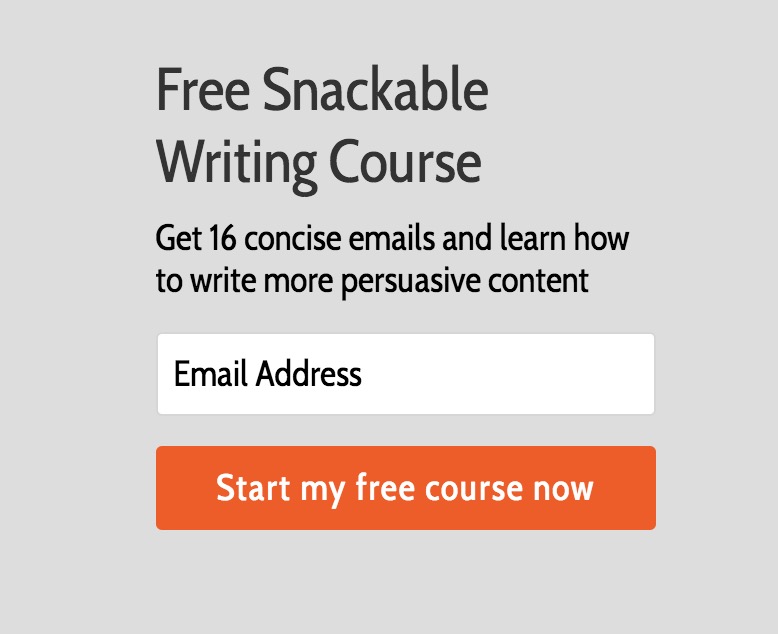
Source: Enchanting Marketing
You may be letting your subscribers down by not living up to their expectations. If they’re disappointed, that’s your fault.
Now, I ask you… Head over to your web form to check whether you’ve set the right expectations.
Discovered that you sent irrelevant emails? Change them. It’s not too late!
3. Figure out the best times to send your emails.
I know, I know. You Googled “the best times to send emails” and got different answers. You’re sick of hearing the same things over and over again. It’s frustrating.
But while you want an exact answer which I would love to give, I can only tell you that it depends. The best times to send emails vary because many factors come into play.
Propeller CRM looked at available studies on the topic. Next, they compiled their findings into an infographic. Below are some of them.
| Audience Type | Engagement | Day | Time |
| Entrepreneurs/workaholics (B2B) | Open, click on, and respond to emails | Saturdays | 10 AM |
| 9-5 office workers/regular individuals (B2B) | Open
Click Respond |
Saturdays
Tuesdays Tuesdays |
10 AM
10 AM 8 AM |
| Consumers (B2C) | Open
Click Respond |
Saturday
Saturday Saturday |
12 AM
12 AM 6 AM |
Divide your list into 2-3 segments. You’ll find segmenting necessary when you’re working on a larger email list. The next time you craft an email, Send it to each segment at different hours and days.Don’t just rely on these findings; do an actual split test.
Take note of their response. Does your morning group engage with your emails more than your evening group?
Pro tip: Make sure to keep your variables consistent except for the days and times you send emails. Since you’re after learning what timing works, focus on time as the constant variable.
4. Ask them to answer a survey and use their responses to improve your campaign.
A lot of times people don’t like what you send them. Your messages could be too salesy or annoying. Regardless, find out what they want. Run a survey! It’s an easy solution but something only a few marketers use.
Remember… If you don’t ask, you don’t get!

Use Google forms or other tools where you can use their free versions. Examples are Survey Monkey and Zoho Survey.
Here are a few guidelines:
Ask open-ended questions.
Open-ended questions give you more information to work with. You get to elicit people’s exact thoughts and feeling on a subject matter. Yet the downside with these questions is that not all your subscribers would bother to answer them. It’s also difficult to analyze answers provided by people who can’t express themselves well.
Create an opinion poll.
An opinion poll differs from an open-ended question in that it outlines a list of ready-made answers that subscribers can simply choose from. They find polls more convenient to complete. These results are more accurate and easier to process.
Keep your survey short.
Nobody wants to answer lengthy surveys. The longer your survey gets, the less likely for subscribers to complete it. How short should your survey be? AWeber recommends a timeframe of 1-5 minutes. That covers 1-10 questions. Mention in your subject line that your survey is a short one.
Incentivize your subscribers.
Survey incentives motivate people to take action. When doing so, be sure that the incentive relates to your product or service. The most common incentive is a discount. Be careful though, because not all surveys need an incentive. Don’t waste your resources on very short surveys.
5. Improve your email subject lines.
Subject lines create a first impression. You’ve heard this too many times. But up to this day, you still never mastered the skill.
Well, let me tell you that you don’t have to be the best copywriter to write subject lines that get your emails clicked on and read. All you need are the right tips and formulas to structure your headlines.
But first, let’s explore the characteristics of bad email subject lines:
- All caps that make it seem like you’re shouting
- Many exclamation points
- Spelling errors
- Straightforward but boring
- You become the focus of the subject line – not your reader
Now, how exactly should you write your subject lines? What are the things that make them interesting?
The R-O-T formula
Neville Medhora uses this tactic himself and introduces it in his course on copywriting. He suggests that if you lack creativity in headlines, just use R-O-T. It stands for Results-Objection-Time. You can switch it up like R-T-O or T-R-O.
Here’s an example:
Results: Master Facebook Marketing
Time: In 30 Minutes
Objective: Even if You’re Not an Expert
Headline: Master Facebook Marketing In 30 Minutes Even if You’re Not an Expert
Numbered lists
When we hurry off to work, we look at our watches to see how much time we have left. When we fall in line to buy tickets, We check how much longer we have to wait.
You see, numbers make something more predictable, real, and logical. People are naturally drawn to numbers. This explains why numerical lists work as email subject lines.
In what situations can you use numbered lists? Use them to reflect the title of your blog post. For example… “10 Simple Tricks to Make Your Hair Grow Faster” or “9 Ways to Build Your Freelance Writing Career.”
6. Show them a Facebook ad using email retargeting
Through repetition, something sticks in your mind. Most often, we make a choice based on how familiar something is to us (e.g. how often we see it, how often it’s mentioned, etc.).
Repetition breeds familiarity. Familiarity breeds trust.
Now, apply this principle to re-engage your inactive email subscribers. How do you do that?
Facebook retargeting. It’s a technique that allows you to show relevant ads to people who’ve before engaged with you. Yes, these people include those who subscribed to your newsletters.
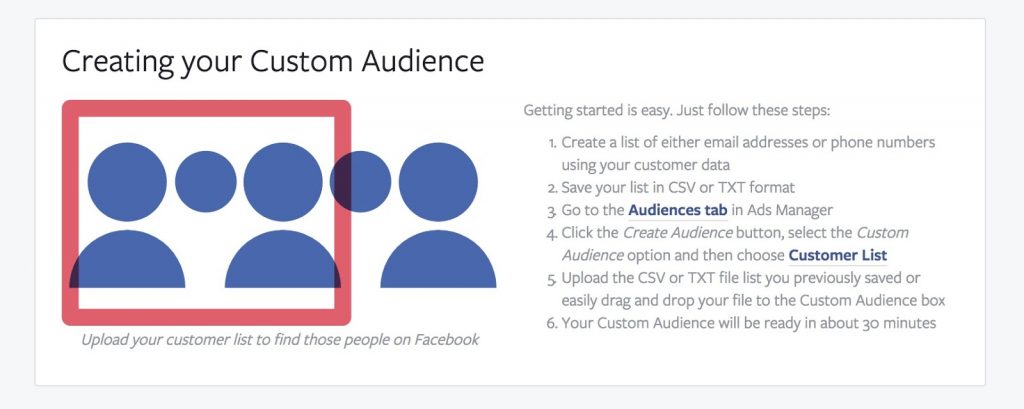
This is how Facebook retargeting works: Head over to Facebook and upload your subscriber list. Facebook will match your email list to their current user profiles. A Custom Audience is then created. If your subscribers are on Facebook, they’ll be seeing your ads.
How to Boost the Potential of Facebook Retargeting
Sure, Facebook retargeting is an effective strategy to re-engage your subscribers. But with more and more business owners using the same method, you’re less likely to stand out.
What if you could base your Facebook retargeting campaign on people’s specific behaviors? Behaviors such as…
- Whether they opened or didn’t open your email
- Whether they clicked on the link within your email
- Whether they received or didn’t receive your email
At Connectio, we created a tool called ConnectAudience that tracks the behaviors of your email list. Those behaviors will be the basis for creating super targeted Facebook ads.

We did a case study…
To test the effectiveness of ConnectAudience on a Facebook retargeting campaign, we ran a case study.
We sent out an email that promoted UpViral to our email list. Next, we subdivided our list into two groups – A and B. Group A got only the email. Group B got the email and if they opened the email, we would show them Facebook ads.
This was the result…
Group B (that were shown retargeting ads) brought in 50% more revenue than group A.
As you can see, ConnectAudience re-engages your email list to the point of bringing you sales. Why? It helps you treat each person on your list as unique. It lets you send the kind of content they want according to their preferences.
7. Do an email reactivation campaign.
An email reactivation campaign entails sending inactive subscribers a special message, telling them you want them back. It’s different from the usual emails that you send out. In a reactivation campaign, email marketers often use subject lines such as “We miss you.”
Marketers usually send reactivation emails when they want to identify inactives and cut them off from their list.
The email entices subscribers to be back and it may include incentives such as discounts, free shipping, or other kinds of free stuff. Then, you give people the option to unsubscribe either in the same email or a second email if they still don’t respond.
Here are some real-life reactivation emails to inspire you:

Source: Pinterest
Belk: “Hurry Back! we’ve missed you.”
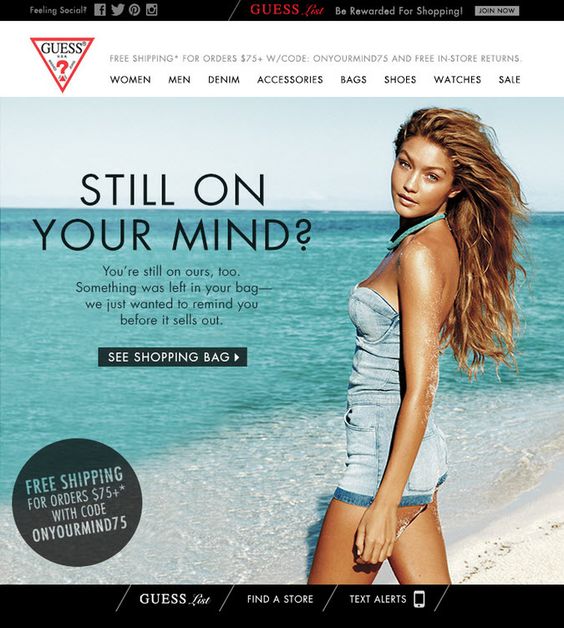
Source: Pinterest
Guess: “Still on your mind?”
Saks Fifth Avenue: “Long time, no see.”
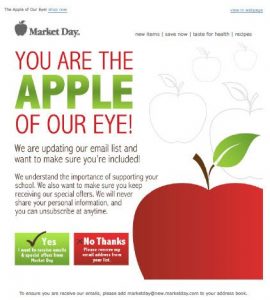
Source: Pinterest
Market Day: “You are the apple of our eye!”
8. Split test variables of your email.
Do you know which variables of your email would create more impact on your subscribers if only you improved them?
One way to find out is to split test. Split testing or A/B testing boosts your email campaigns by letting you test variants of your message. One version (A) is tested against another version (B) with the tweaked element.
Let’s say you want to increase your email open rates. In this case, the subject line would be the most obvious thing to split test. You split your email subscriber list into two groups. Group A receives your usual email while group B gets the same email but with a different subject line.
If you’re after increasing click-throughs to your website, you could change the call-to-action.
You can split test any element of your email:
- How you address your subscriber (Dear friend, /Mrs. Brown, etc.)
- Frequency of sending your emails
- Images within your emails
- Your offers or incentives
- Length of copy (short vs. long)
In one of my videos on UpViral, I shared tips that will make split testing successful. One of the things I mentioned in the video is that you need to split test variables one at a time.
You might be tempted to change many variables at the same time but this only makes it hard for you to know what works and what doesn’t.
9. Segment your email list.
Anyone who’s new to email marketing may not know what email segmentation means. Email segmentation honors the fact that each subscriber has unique needs, expectations, and preferences.
For example, a message that appeals to subscribers ages 30 and up may not appeal to teenagers. This implies that blasting out the same email message to your entire list doesn’t give you great results.
Research shows that 39% of marketers who segment their email lists generate better open rates.
How to do email list segmentation? Divide your list into smaller groups or segments. A segment should represent a characteristic that differentiates itself from another segment.

There are unlimited ways to segment your list. You can segment based on:
- Age range
- Geography
- Buying behavior
- Education
- Job title
- Engagement level
- Stage in the sales cycle
- In-store vs online store visitors
- Website activity
In order for you to effectively segment, you need to gather as many details from your subscribers as possible. Gender and recent purchases are details that are easy to get.
More specific details like individual preferences may require that you run surveys. Another way to generate data is to include more form fields. Visitors must fill them out first before they get to download your lead magnet or free gift.
10. If all else fails, remove dormant subscribers.
As a business owner and marketer, there’s a ton of work that goes into strategizing, segmenting, and creating emails. You’re committed to forging a great relationship and your audience may not feel the same.
Subscribers display a lack of interest despite your efforts to re-engage them. Should you manually delete them from your list?
Yes. Delete subscribers who haven’t opened your emails 6 to 12 months following your reactivation campaign. Also, delete subscribers who don’t respond despite your efforts in creating amazing content. This period of time gives you a better sense of the quality of your inactive subscriber list.
Cutting a part of your mailing list may seem like the hardest thing to do now. It only becomes easier if you realize the benefits you could gain:
- Helps you spend your resources (time and money) elsewhere
- Improves your engagement metrics
- Keeps your entire list healthy
- Enhances your content strategy based on the insights you learn
- Maintains your reputation because you stop annoying subscribers who want to be left alone
Final Thoughts
Now you know how to re-engage your sleepy or inactive subscribers. Use this knowledge to maintain a clean list and keep it that way. Most of all, you’re able to run better email campaigns in the future that result in more conversions.


